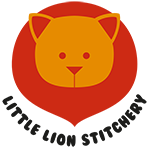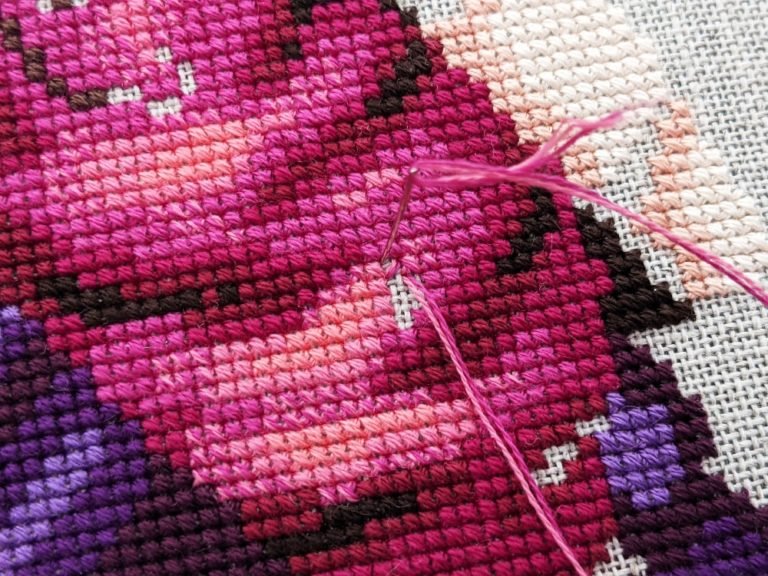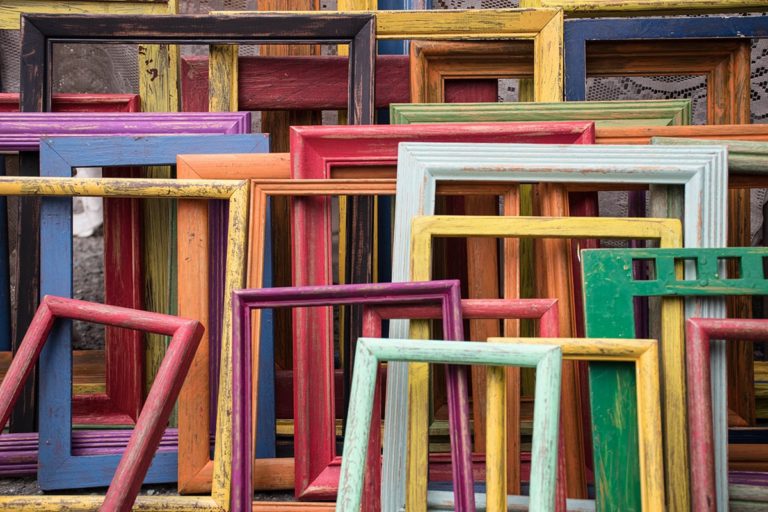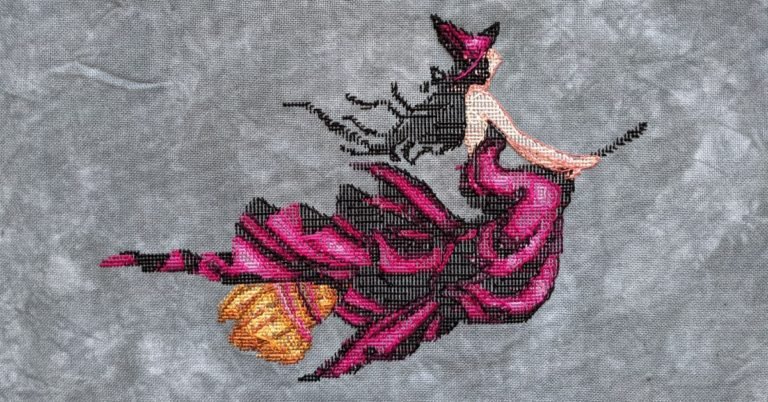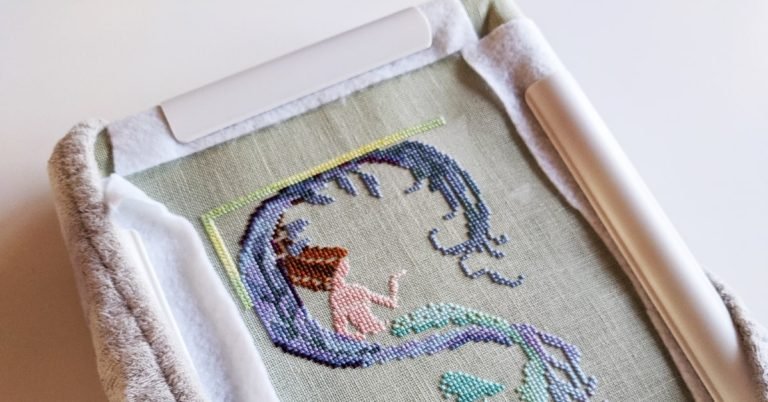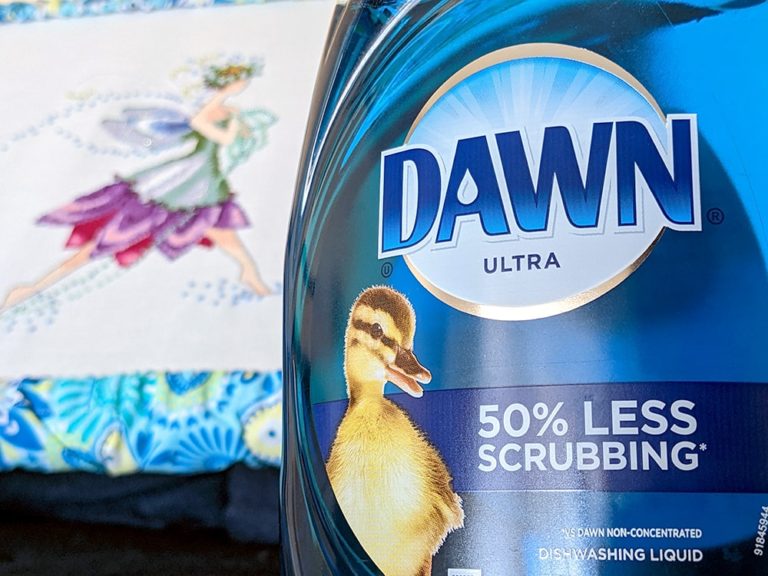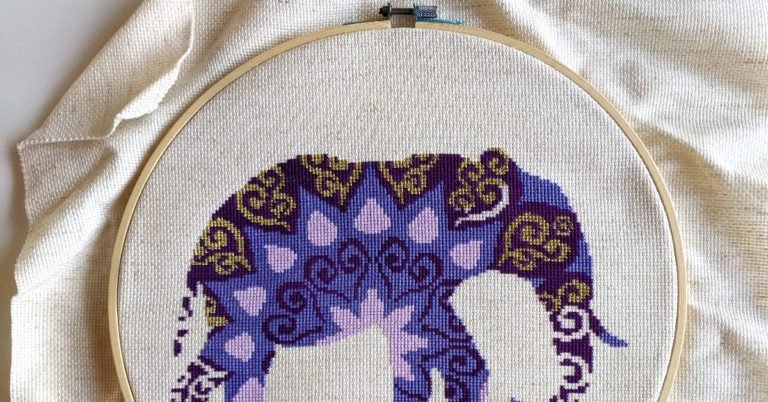Is Cross Stitch a Good Hobby for Beginners?

From a young age, I’ve always done arts and crafts. Both my grandparents met taking an art class so I guess you can say that art is in my blood.
I don’t think that there isn’t a craft or art medium that I haven’t tried.
Even now, all my friends know that I am super crafty. Everyone is always asking me how to go about doing this or that.
For some reason, my friends want to get into knitting. Many beginners don’t know the difference between knitting and crochet. I think they are just more familiar with the term knitting.
They see all these cute baby blankets on Pinterest and Instagram, and want to learn how to make them. However, I’ve never been one for knitting. It’s just not my cup of tea. *gasp* I’m sorry if anyone takes offense to that.
I only recently got back into cross stitching. I was into crocheting for a long time. Mostly, cute amigurumi and a baby blanket every once in a while.
My husband, Mike, is always amazed by my crafting skills and wants to participate. He’s tried both crochet and cross stitch. His conclusion is that cross stitch is way easier!
I agree that cross stitching is a simpler craft to start. You are just following a pattern to put little x’s through holes. It’s a lot like pixel art. Granted you can’t make a blanket or baby booties, but you can make other personalized gifts that are just as cute.
Not only is counted cross stitch a great hobby for beginners, but the hobby can grow with you. You can learn new techniques, such as working with metallic floss and beading, and work on more complicated patterns as you become more experienced.
Cross stitch is a good beginner hobby because it isn’t a huge investment, it doesn’t take up a lot of space, and it doesn’t have as steep a learning curve as other crafts.
WANT FREE CROSS STITCH PATTERNS?
Sign up for my newsletter to get access.

What is the Cost of Cross Stitching Materials?
If you are a beginner, you might want to start with a kit. Kits will come with everything you need to get started, including the pattern with instructions, thread, fabric, and a needle.
Kits usually cost around $5-$10. The cost will depend on the size of the kit and amount of materials. Don’t forget to check if your store has coupons!
Compare this to buying yarn and knitting or crochet tools if you do not already have. A skein of yarn costs $3-$10 with more quality yarns costing more. You figure if you want to make a baby blanket with 3 colors let’s say $5 each, that’s $15 just for yarn.
I’m not saying that cross stitch can’t be expensive because it can. Especially, if you want to kit up a project that uses silks, beading, and metallic threads.
Buying Fabric
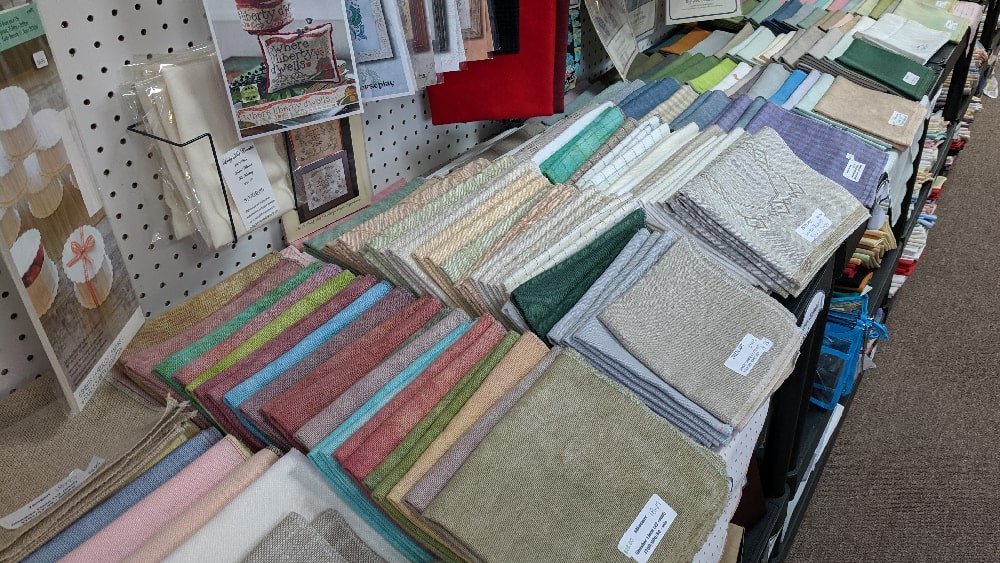
You can purchase plain fabric relatively inexpensively. A roll of 15”x18” 14 count Aida costs $3.99.
I wouldn’t recommend buying JoAnn’s brand of fabric because it is notorious for not being square.
However, as you become more advanced you may venture into evenweave and linens, which can be more expensive. A 13”x18” piece of 28 count evenweave costs $5.24. A 13”x18” piece of 28 count linen costs $8.24.
I usually stitch on 18”x27” 32 count evenweave, which will reflect in the price. The higher the count and the bigger the size of fabric, the more expensive the price will be.
You can purchase opalescent fabric which has metallic thread running through it giving the fabric a shimmer.
You can also purchase hand-dyed fabric, which will bring the cost up. You can dye your own fabric, but buying already dyed fabric will save you the mess, time, and the cost of dyes.
Many of these hand-dyed fabrics will cost about $25-$30 for a 17”x25” 32 count piece of linen.
Buying Floss

The price of DMC just went up to $0.62. You may need lots of skeins to complete a project. However, if you are a beginner, you probably won’t be working on a project with tons of colors.
You may even already have some of the colors in your stash. It’s fine if you don’t have a stash built up yet. I accumulate my floss by project. Most smaller projects don’t use that much floss so you will have some for your next project.
It’s best when a pattern tells you how much of a particular color you will use. This way you will know whether or not to buy a new skein.
Just like with fabric there are brands of hand-dyed floss. These of course will be more expensive at about $2-$3 a skein.
Many designers will use these “fancy flosses” in their patterns. Some designers will include DMC conversions. If not there are lots of resources that can be found online if you prefer DMC or other brands.
The benefit of using fancy floss is that they are variegated so you can use less colors but get more tonal variety.
There are also silk and metallic flosses.
Buying Tapestry Needles
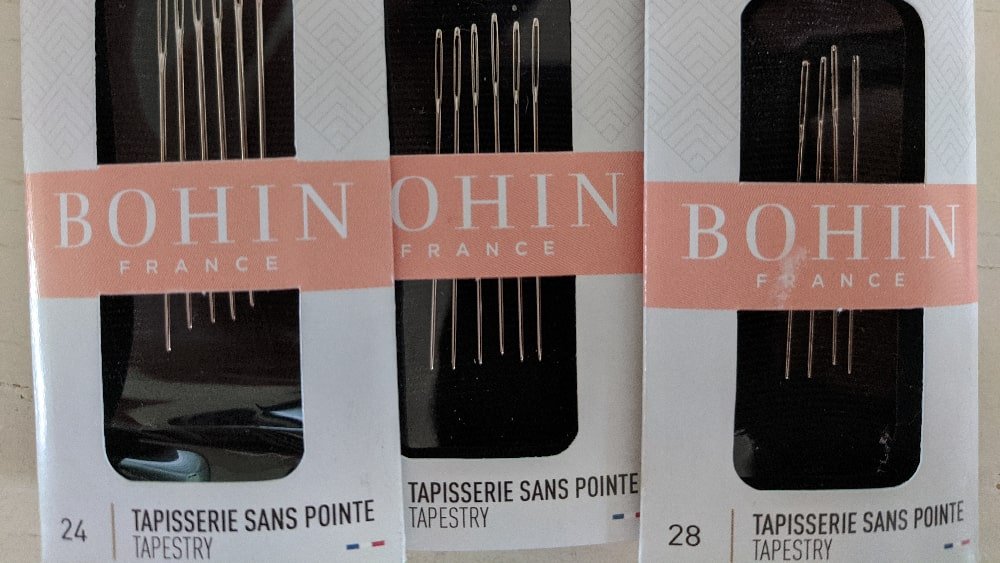
Tapestry needles are blunt needles used for cross stitch. This makes it easier to go through the holes of aida without piercing the fabric.
The most common sizes are 24, 26, 28, corresponding for the most part to 14/28, 16/32, 18/36 count fabrics. I prefer using a 28 needle on my 32 count fabric.
DMC makes their own needles, but they aren’t as smooth or durable as other brands. The cost is $2.99 for 6 tapestry needles. The benefit of DMC is that they can be found at any craft store.
I like to use Bohins. The eye of the needle is bigger on the 28s than on DMC. The coating also doesn’t rub off as quickly with these, which is good for me because I have skin sensitives. These needles cost $2.99 for 6 needles and a superior product.
Other recommended tapestry needles include John James at $2.59, Piecemakers at $2.46, and Pat Carson’s at $25 for a pack of 25.
John James Petites are a smaller size which is 1 ¼” opposed to their standard 1 ½” length. The shorter size allows you to use more of the thread. The cost for a pack of 6 Petites is $3.39.
Many needles also come in a gold-plated variety.
Buying Patterns
You can buy printed and digital patterns. There are so many designers to choose from.
Many designers have their own online shop or use Etsy.
You can find printed patterns at your Local Needlework Shop or online.
The cost for the pattern could be $3-$10 for a digital pattern and $8-$20 for a printed pattern. The price will vary by designer, size of the piece, and the complexity of the pattern.
Some of my favorite designers include Hands on Design, Emma Congdon, The Frosted Pumpkin Stitchery, and Nora Corbett/Mirabilia.
Do Cross Stitch Supplies Take Up a Lot of Space?
Comparatively to other hobbies, cross stitching does not take up a lot of space. There are countless ways to organize your supplies. I like to store my floss in a plastic photo box organizational system.
When Mike and I moved into our current apartment, I had to downsize my crafting. My previous apartment had storage space while our new apartment does not.
So I traded my yarn for thread and began cross stitching again after many years. This was a nice trade off because we have limited space. All of my supplies are easy to find and more organized than my yarn ever was.
It’s nowhere near perfect, but I don’t need a ton of room for storing everything.
Is Cross Stitching Hard to Learn?
The basics of cross stitching are easy compared to other crafts. There aren’t any complicated stitches to memorize. You are just sewing little x’s through the holes of the fabric.
Reading a pattern is relatively straight forward. You will have a key with symbols. Sometimes the pattern will be in color but sometimes it will be in a variation of black and white.
Like I had mentioned earlier, if you purchased a kit, the kit will have instructions.
I learned that the best way to start is with the loop method. Fold the strand of floss in half and pull your needle up through the fabric until you are left with a little loop in the back. Then push the needle down a different hole and anchor the floss by going through the loop.
This will prevent you from having as many tails and create a neat back for your project.
I prefer the Danish method of stitching, in which you start with one leg or half cross stitch. Then once you get to the end of the row you complete the other side of the X.
More specifically, the needle comes up from the bottom left of the fabric, goes down the top right, up the bottom right, and ends in the top left hole.
I complete my sections by color so I will, for the most part, finish one color before I start the next.
Final Thoughts
Many of the downsides of cross stitching are similar to the downsides of other fiber art crafts as well. I wouldn’t let these drawbacks detour you from trying cross stitch.
Cross stitching can be very therapeutic. In my case, I like to cross stitch when I’m stressed or anxious because it alleviates that tension. It provides a mediation that I can get lost in and all my worries just dissipate.
Don’t worry if crossing isn’t for you. There are plenty of other hobbies to fall in love with. As long as you tried something new.
Happy Stitching!

